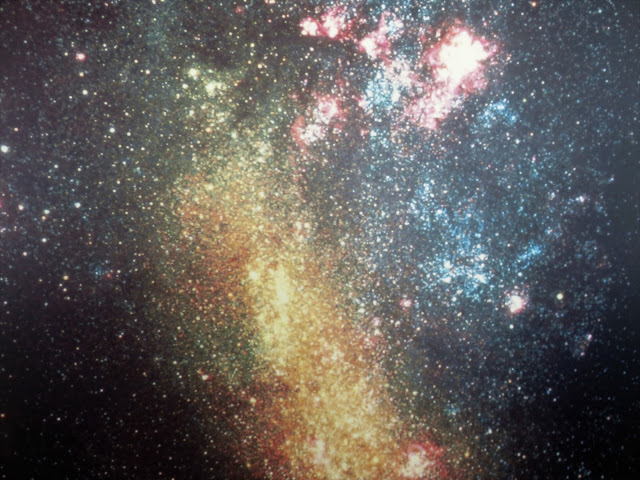Fifty-six miles southwest of Tucson, and in the
midst of the Tohono O’odham Nation, the Kitt Peak National Observatory is
nestled in 200-acres of rolling hills at an elevation of approximately 7000
feet. Part of the National Optical Astronomy Observatory (NOAO), this facility
supports the most diverse collection of astronomical observatories on Earth for
nighttime optical and infrared astronomy and daytime study of the Sun. The
Observatory offers both daytime tours and nighttime observation programs, and
our goal was to attend one of the nighttime observation programs during a new
moon and non-cloudy night. It took a couple of tries, but finally we were able
to schedule our tour for March 27, a clear night with no moon for optimum
viewing.
Kitt Peak is home to 25 optical and 2 radio
telescopes and offers professional and hobby astronomers some of the finest
observing to be found in the world. Visitors can choose from three guided tours
during the daylight hours, or take self-guided tours of the 4-meter, 2.1
meter, and McMath-Pierce Solare telescopes. There are also three separate Night
Program options, including an overnight option for the more serious astronomy
buffs. We arrived early in the day so we could tour the Visitor’s Center, explore
the stationary exhibits, and get a feel for the surroundings. Afterwards we participated
in the 4-hour nighttime program that started with a dramatic sunrise,
followed with an introduction to using star charts, binoculars, and most
dramatically, research-class telescopes to observe a variety of astronomical
objects in the night sky.
Our guides were very knowledgeable and
friendly, and treated us to a wonderful overview to stargazing. The most
exciting part for me was our telescope viewing, where we were able to view a
double star system in the Big Dipper; a dying star with fuzzy edges and a
bright spot exploding in the middle; a star cluster aptly called Salt and
Pepper; a distant cigar shaped galaxy called M-82 (I couldn’t believe I was
looking at a galaxy nearly 12 million light years away!); and the grand finale,
Jupiter - as sharp as a photograph with the bands clearly visible, and four of
its moons shining like pinpoint stars. I was amazed, impressed, and humbled to
have the opportunity to glimpse a wee speck of what exists in our glorious
Universe.


























No comments:
Post a Comment